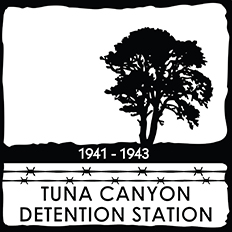 ISSEI CIVIL RIGHTS LEADER
ISSEI CIVIL RIGHTS LEADER
Sei Fujii was an iconic Issei civil rights hero who fought for justice against all odds for the Japanese
immigrant community in America. The amazing exploits and achievements of Sei Fujii included being a legal lifeline for Japanese immigrants for over four decades and winning a United States Supreme Court case and a California Supreme Court case, both of which had significant impacts for Japanese immigrants in land ownership, healthcare, and citizenship. He also led the community as a newspaper publisher, broadcaster, and legal advocate.
Sei Fujii was born on December 22, 1882 in Takamori Village of Iwakuni, Yamaguchi-ken, Japan and he immigrated to the U.S. in 1903. He graduated from USC Law School in 1911. Because U.S. laws prevented Japanese immigrants from obtaining U.S. citizenship, he was ineligible for a California State Bar License.
Undeterred, Fujii teamed with J. Marion Wright, a USC Law School classmate and civil rights attorney, to help Japanese immigrants with multiple legal issues. They defended Japanese farmers, businessmen, families and individuals facing losses, defamation, deportation, and corruption. One major legal victory was a United States Supreme Court case in 1928 (Jordan v. Tashiro), that permitted the construction of the Japanese Hospital of Los Angeles in Boyle Heights. (During the influenza epidemics of 1918 and early 1920s, many Japanese Americans died because they were not admitted to White hospitals.)
Challenged by the onslaught of discrimination against the Japanese, Sei Fujii was determined to give his community a voice. In November 1931, he started the Kashu Mainichi, the Japanese California Daily Newspaper, which largely targeted the population of less educated farmers. He subsequently started a radio program, KRKD, that celebrated the achievements of the Nisei and kept the rest of his community informed of relevant and current issues. At the same time, he continued his work as a legal consultant and provided Issei advice on how to live and survive discrimination in America.
Fujii was highly influential in leading the development of Nisei Week, giving the Nisei the opportunity to participate in the businesses and affairs of the community that had long been previously dominated by the Issei. Nisei Week brought the community together to celebrate their culture and growing proud American heritage.
During World War II, Sei Fujii was arrested by the FBI in February 1942 and imprisoned at the Tuna Canyon Detention Station. Later, he was sent to an Immigration and Naturalization detention camp in Santa Fe (NM), an Army internment facility in Lordsburg (NM), and then returned to Santa Fe before being released on March 19, 1946.
After the war, Sei Fujii challenged the 1913 California Alien Land Law that prohibited Aliens ineligible for citizenship from owning land or possessing long-term leases. In 1948, he purchased a lot in unincorporated East Los Angeles and became the plaintiff in the case of Sei Fujii v. California. In 1952, the California Supreme Court invalidated the California Alien Land Law.
The McCarran-Walter Act of 1952 allowed Japanese to become U.S. citizens. Sei Fujii finally became an American citizen, but died 51 days later. Sei Fujii pioneered the difficult path that allowed for the subsequent generations of Japanese Americans to thrive today.
The Little Tokyo Historical Society and the Japanese
American Bar Association petitioned the California Supreme Court, who on May 24, 2017, granted Sei Fujii honorary Posthumous Membership in the State Bar of California. Led by Chief Justice Tani Cantil-Sakauye, the high court said, “despite being formally excluded from joining the ranks of the legal profession throughout his life, Fujii spent much of his career using the courts to advance the rule of law in California.” This honor was Sei Fujii’s final legal victory.
Credit:
Michael Okamura, President
Little Tokyo Historical Society

